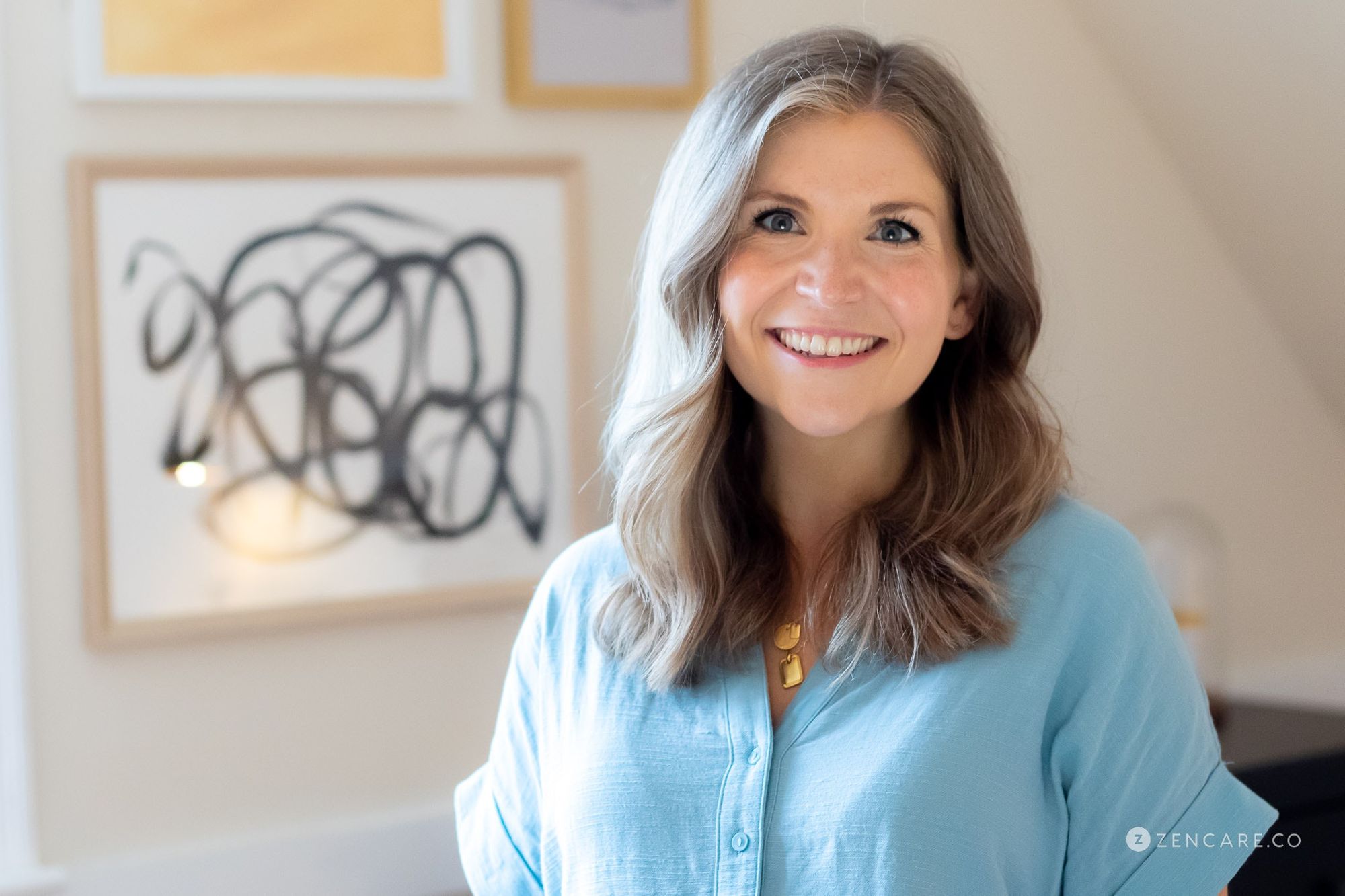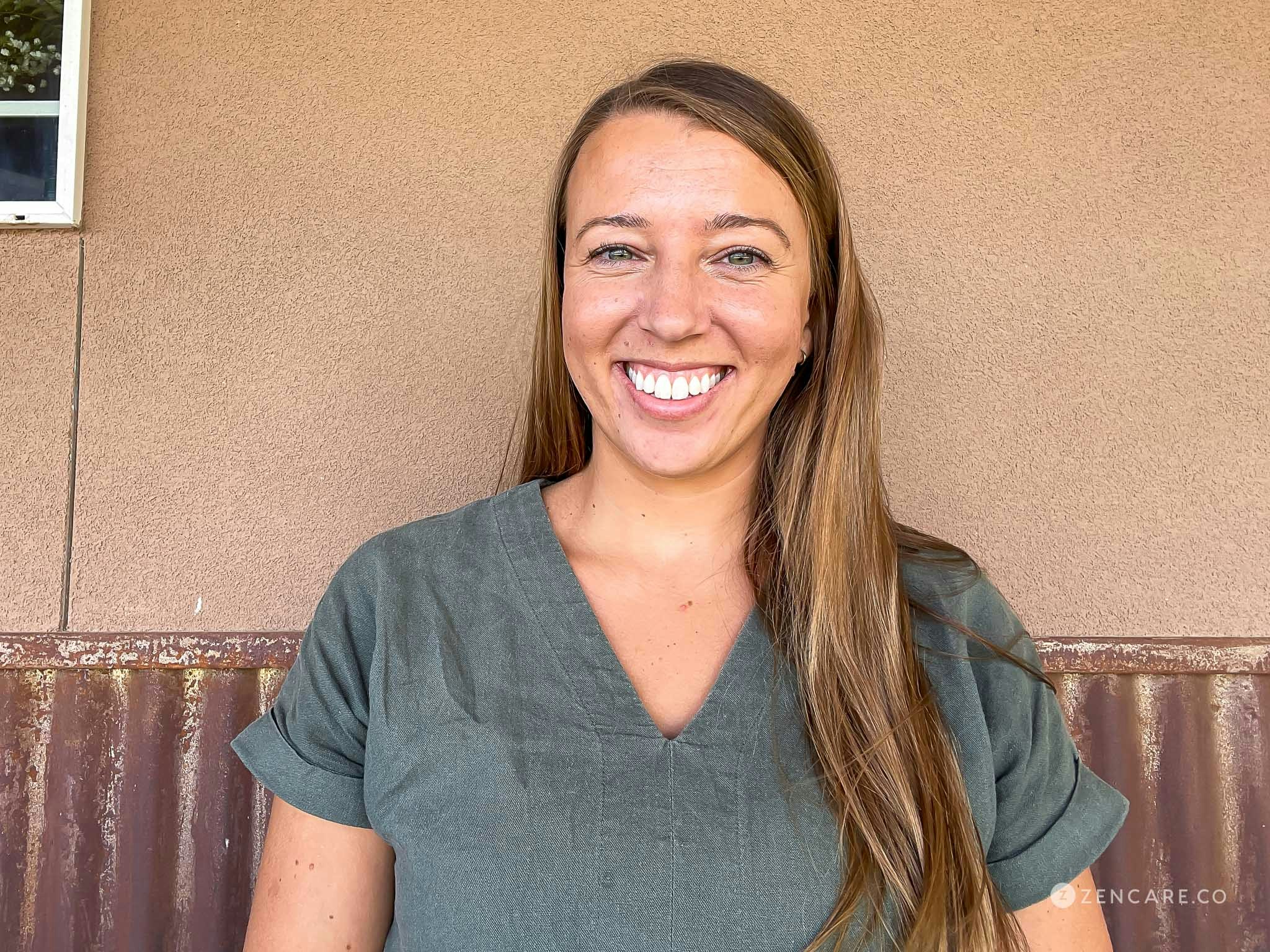The latter half of the year can bring many changes — changes in weather, approaching holiday logistics, transitioning back to school, and more. These transitions can cause many of us to feel stressed and even overwhelmed. This can lead to changes in mood, or can even cause Seasonal Affective Disorder (or SAD), which is a disorder that occurs during times where there is less sunlight and can include feelings of fatigue, depression, and hopelessness. As a therapist, you can equip yourself with tools and strategies to help clients combat Seasonal Affective Disorder, as well as other mood changes. In this article, five Zencare therapists share their insights on Seasonal Affective Disorder and how to support clients who experience it.
Brittannie Moroz LMHC
Brittannie Moroz is a Licensed Mental Health Counselor in Rhode Island

How does Seasonal Affective Disorder affect the body?
Our nervous system works constantly in the background to detect threat and safety (among other functions) and to respond appropriately. When the nervous system is then overwhelmed, it detects a threat to our wellbeing and signals the body to shift into a protective mode in order to survive the threat: fight, flight, freeze, or fawn. The immobilization or freeze response leads to a shifting in physiological states that involves a slowing in heart rate, increased sense of lethargy, and overall feeling of heaviness. While this may be an effective response in the face of immediate danger, it can present barriers to functioning in daily life.
In the context of Seasonal Affective Disorder, it can be helpful to consider the stressors that come with the changing of the seasons in order to understand why the nervous system may respond with an immobilization response. The changing of the seasons can bring a range of excitement and joy to stress and overwhelm. We may feel obligated to engage in constant seasonal activities to make the most of the season while also navigating increasingly busy social or academic calendars. We may feel anticipatory overwhelm when we think of navigating stressful family dynamics or griefs associated with the holidays. With all of these accumulating stressors and demands on our attention and energy, the nervous system may rapidly become overwhelmed and determine a need to conserve energy, leading to the shut-down response.
Margaret Rocca, LMHC
Margaret Rocca is a Licensed Mental Health Counselor in New Hampshire
What are ways therapists can support clients who struggle with Seasonal Affective Disorder?
In my practice I encourage clients to either get outside, or open the blinds etc to see sunlight. If that is not an option then a light box is a great tool too!
I also encourage my clients to utilize CBT skills — one of my favorite assignments is to ask them to identify a time when they were "feeling their best" and come up with a list of what they were doing in their life at the time — were they regularly attending a workout class? If they are in a relationship, were they having more date nights? — and based on THAT LIST work to reintegrate some activities into their schedule.
We've all had those times when we've said "I think if I started drinking a green juice and jogging before work I'd feel better.'' We might try it for a day, or two but when we don't get the results we are looking for, we give up. What if the result was right on the other side of your next jog, you just gave up 1 day too soon? This is why I believe pulling from actual experience is key! We might not feel our best on day 1, 2 or 3 —but if we have a point of reference from the past that does validate "When I do X I feel Y", we are more likely to stick with habits for that reward.
Brooke Coffey
Brooke Coffey is a Licensed Professional Counselor in New Mexico

What strategies do you use in your private practice to aid clients struggling with mood fluctuations that arise during the fall and winter?
Therapists can create an environment in which clients feel heard, understood, and accepted. It can be extremely unnerving to experience mood swings. As a therapist, I always strive to help clients realize that they are not alone in their struggle. On top of creating a safe environment, therapists will individually tailor therapeutic interventions to help regulate mood fluctuations.
There are many strategies that are highly effective in treating mood fluctuations. Here are simply a couple examples: first is tracking your mood. This is a process of noticing how and when your moods change throughout the day. This can help identify if there are patterns in the fluctuations, such as in the morning or after missing a meal. Coping skills can then be tailored based on those patterns.
Second is increasing self-compassion and gentleness. We can be self-critical and expect a lot from ourselves. This can lead to negative self-talk around mood fluctuations. Negative self-talk can make mood fluctuations worse. Instead, work on increasing acceptance and gentleness around mood changes.
Marlin Wolf, PhD
Marlin Wolf is a Clinical Psychologist in Florida

What are ways therapists support clients who struggle with Seasonal Affective Disorder?
People with Seasonal Affective Disorder (SAD) can benefit from a variety of interventions and treatment strategies. Here are some ways clinical psychologists and behavioral health professionals can help those suffering from SAD:
- Cognitive Behavioral Therapy (CBT): CBT is effective in treating SAD. It focuses on identifying negative thought patterns and behaviors associated with the disorder and replacing them with positive ones.
- Light Therapy: This is one of the most common and effective treatments for SAD. It involves exposing the patient to a bright light that mimics natural sunlight for a specified amount of time each day. A psychologist can guide patients on how to use this therapy effectively.
- Medication: While psychologists typically do not prescribe medication, they can work in conjunction with psychiatrists or primary care providers to determine if medication like antidepressants could be beneficial. That said, nonpharmacological treatments should be tried first.
- Mindfulness and Relaxation Techniques: Techniques such as meditation, deep breathing exercises, and progressive muscle relaxation can help reduce symptoms.
- Biofeedback and Neurofeedback: These are techniques that train individuals to control physiological functions. They might be beneficial for some individuals with SAD.
- Group Therapy: Joining a support group can be beneficial. Sharing feelings and strategies with others who have the same condition can be therapeutic.
Laverne Santangelo LPC
Laverne Santangelo is a licensed professional counselor in Michigan
Any additional words on how therapists can help clients with Seasonal Affective Disorder?
It’s ok to have a down day, if you feel like staying in bed one day and binge watching a TV Show or reading magazines or books, it's ok! We all have days like this, but after one day of riding the wave then you should really get up on the second day and have some activity to boost the mood. Increase exercise or begin an exercise routine that helps with increasing the "feel good hormones" in your brain and body. Limit alcohol, it can be a depressant especially if you are taking medications. Meditation and other mindfulness activities are excellent. Purchase a sun-light with a timer for morning sunrise. Avoid social media, it can be a downer on some days.
Conclusion
Seasonal Affective Disorder (SAD) and general mood changes can cause a variety of symptoms in our bodies, including lethargy, irritation, and depression. The support of licensed mental health professionals can be crucial to aid those struggling to get through this time. We hope the insights into what has helped Zencare providers and their clients work through the effects of SAD and climate changes during the fall and winter months can be helpful in informing your own work with SAD.